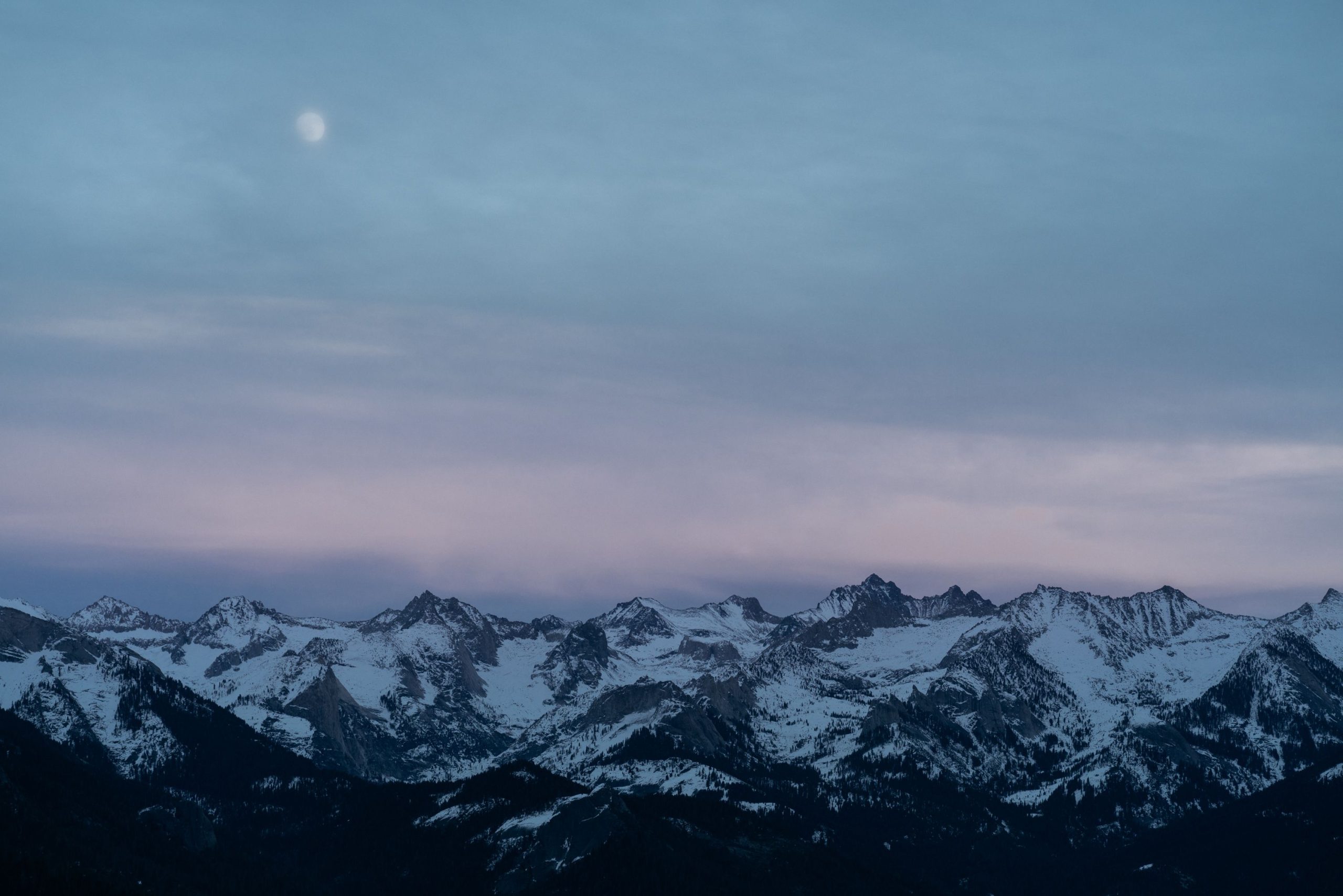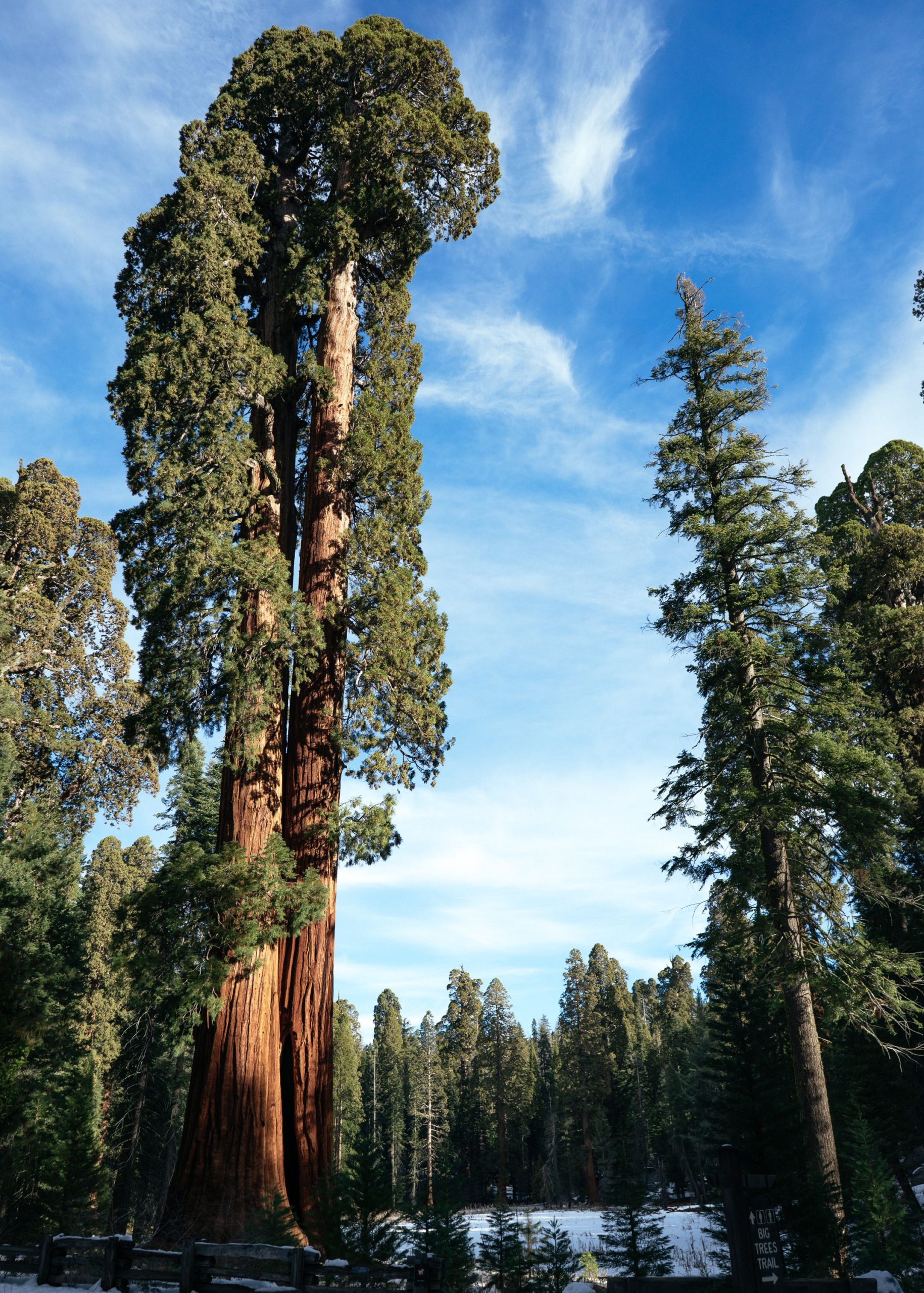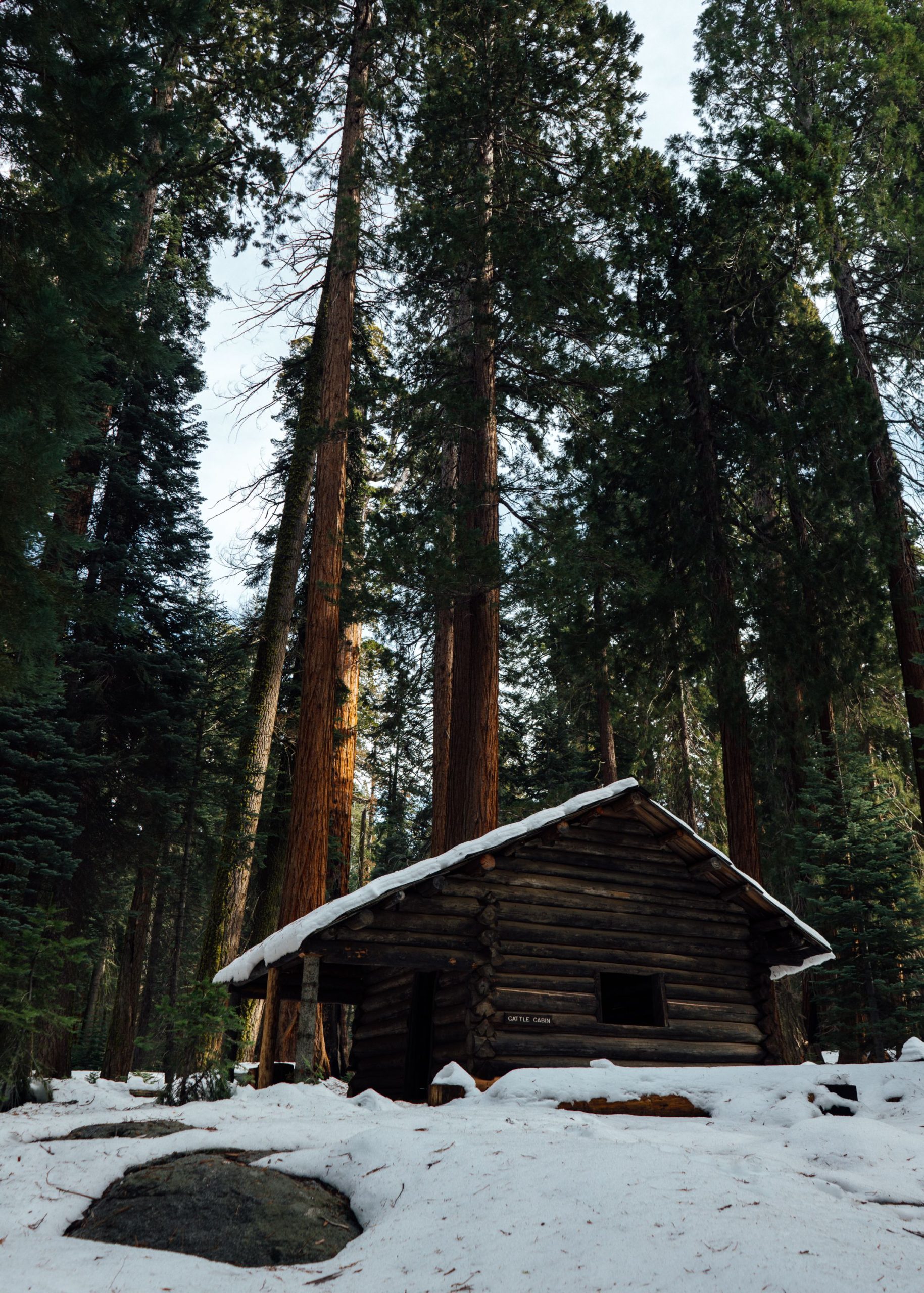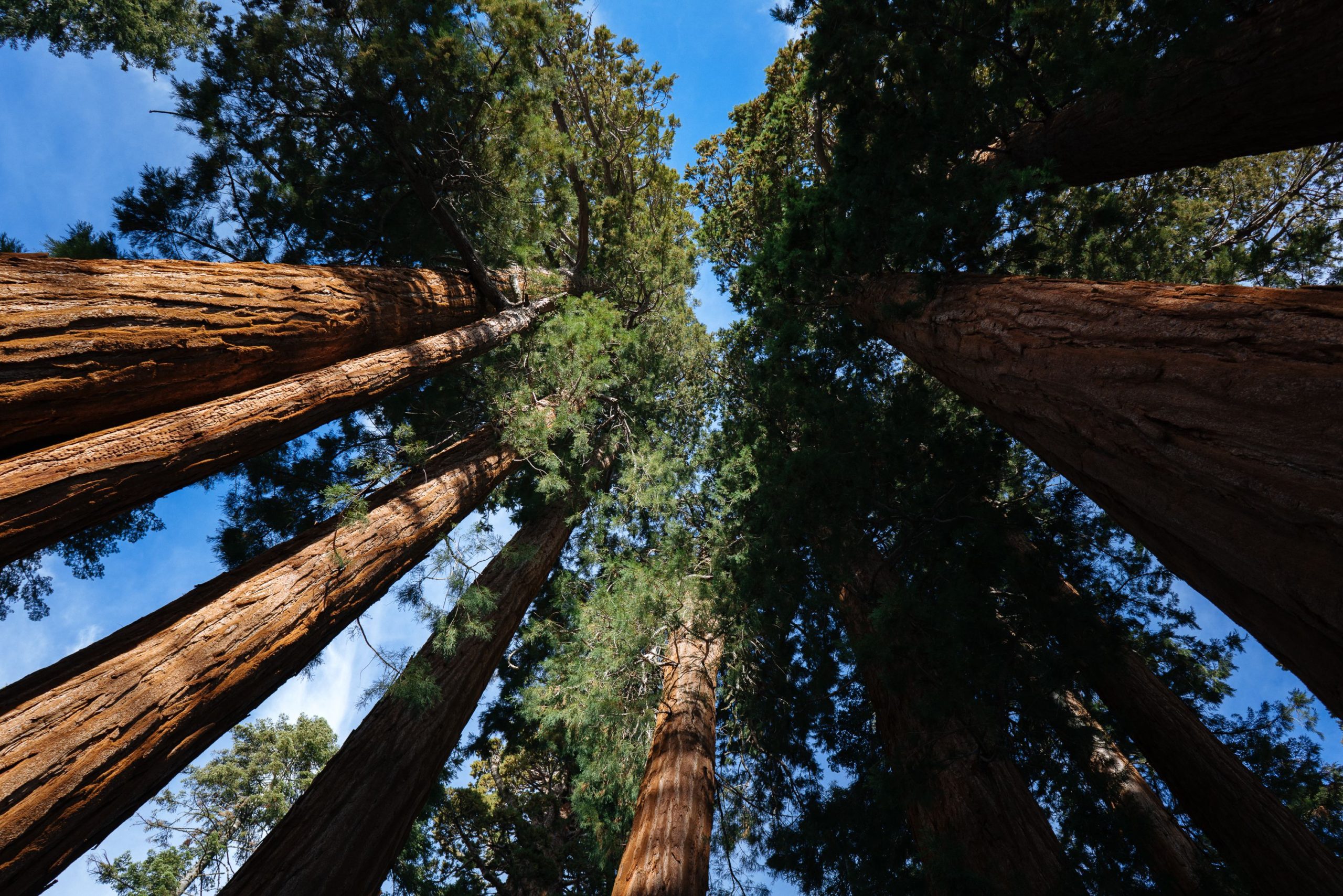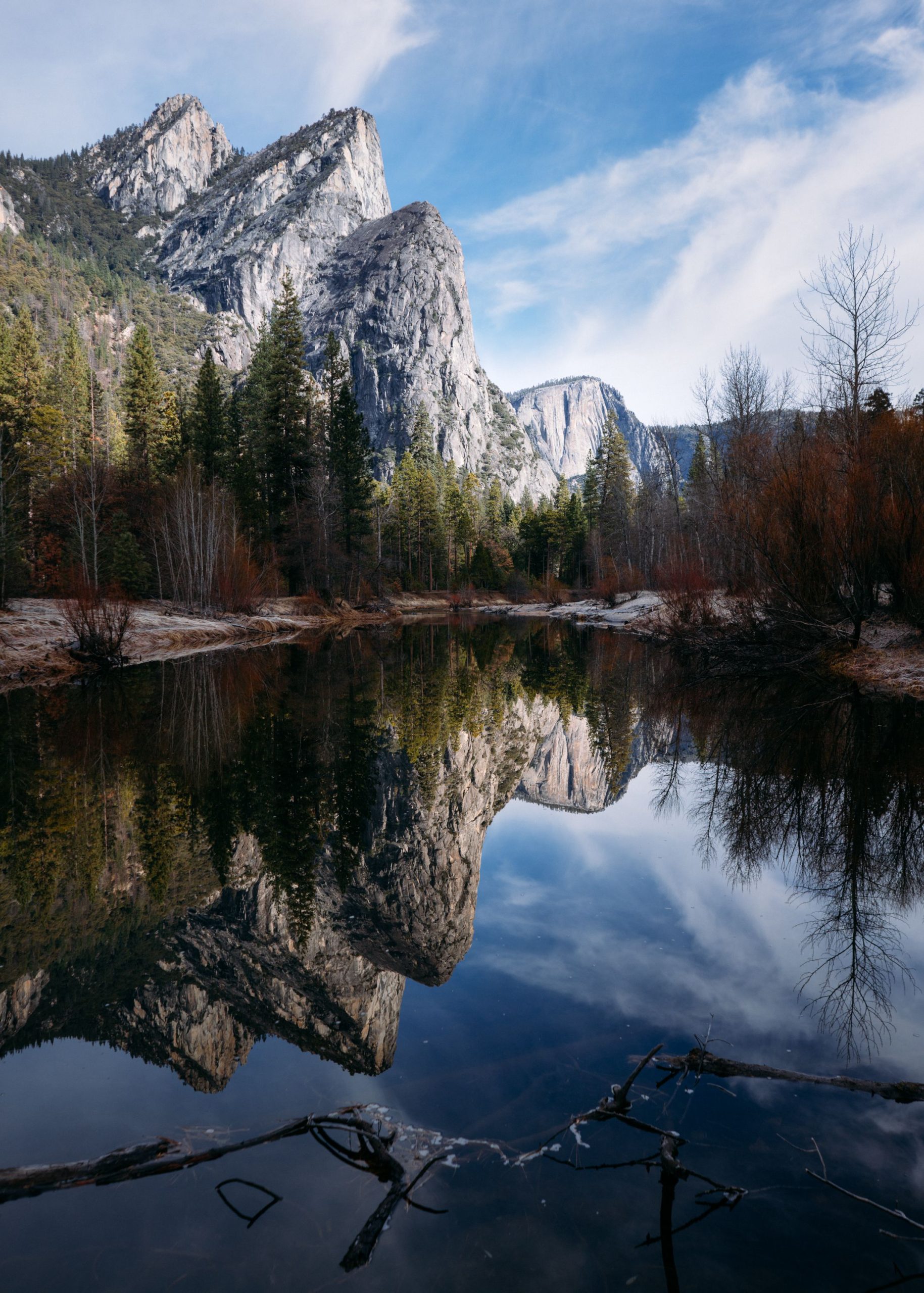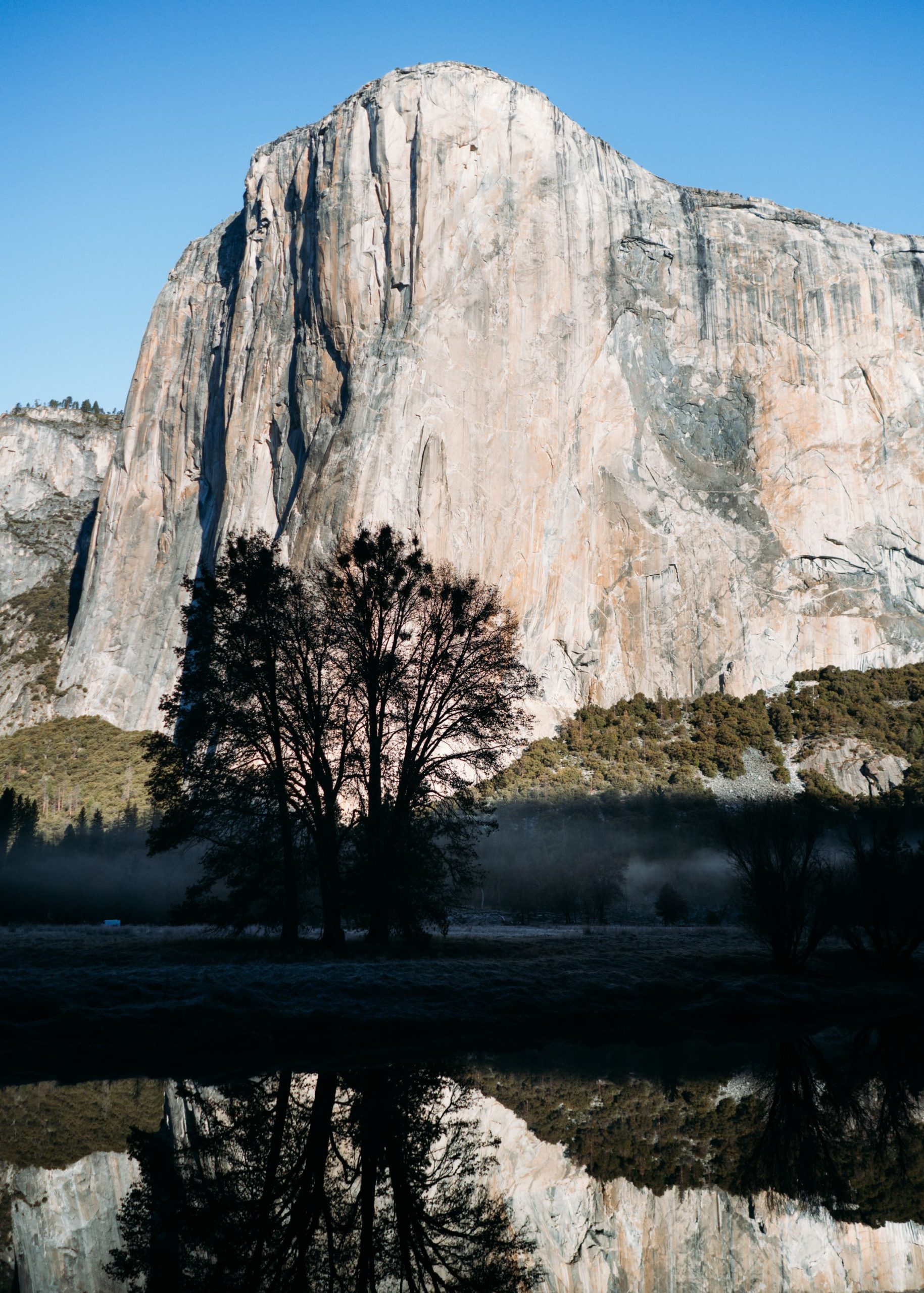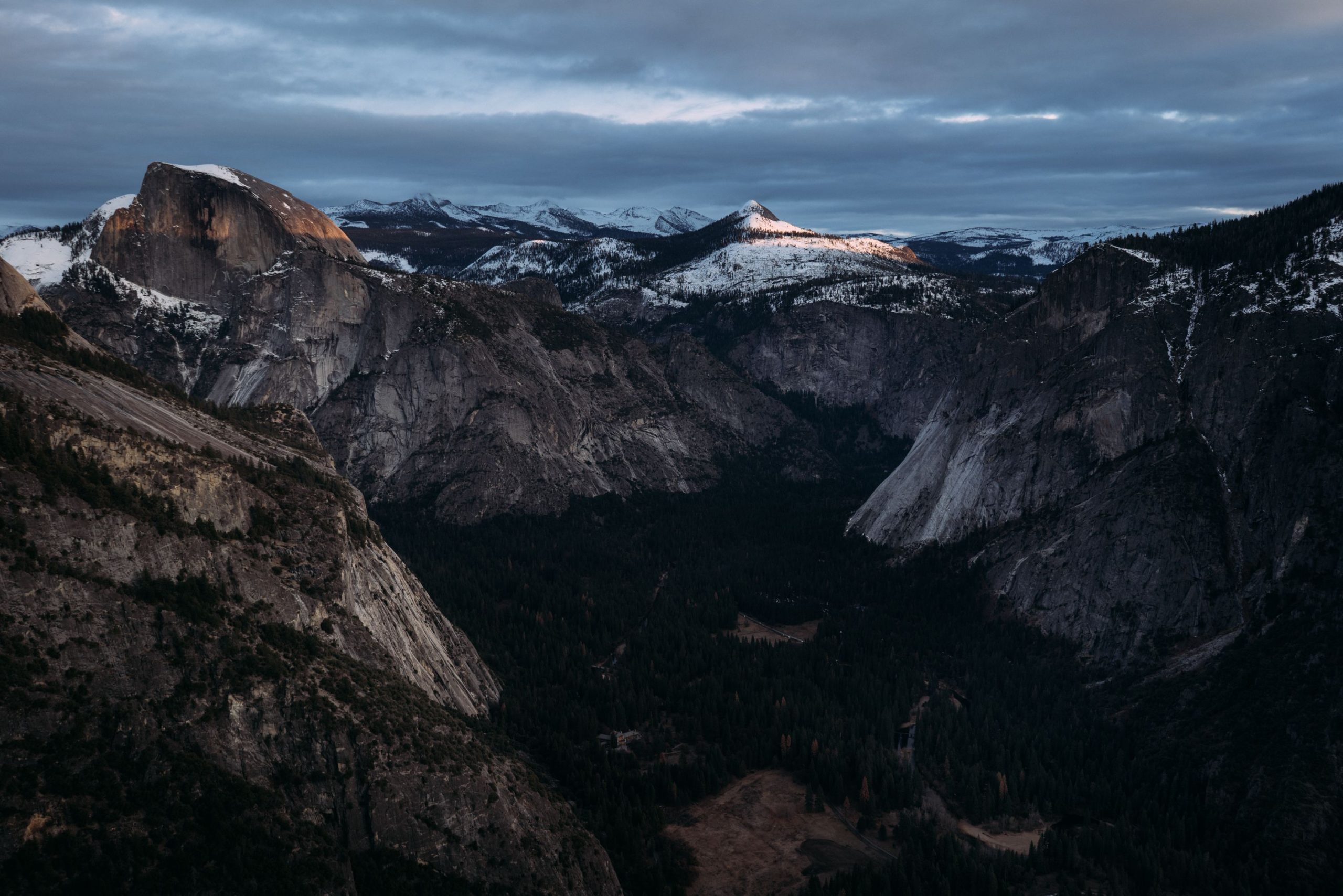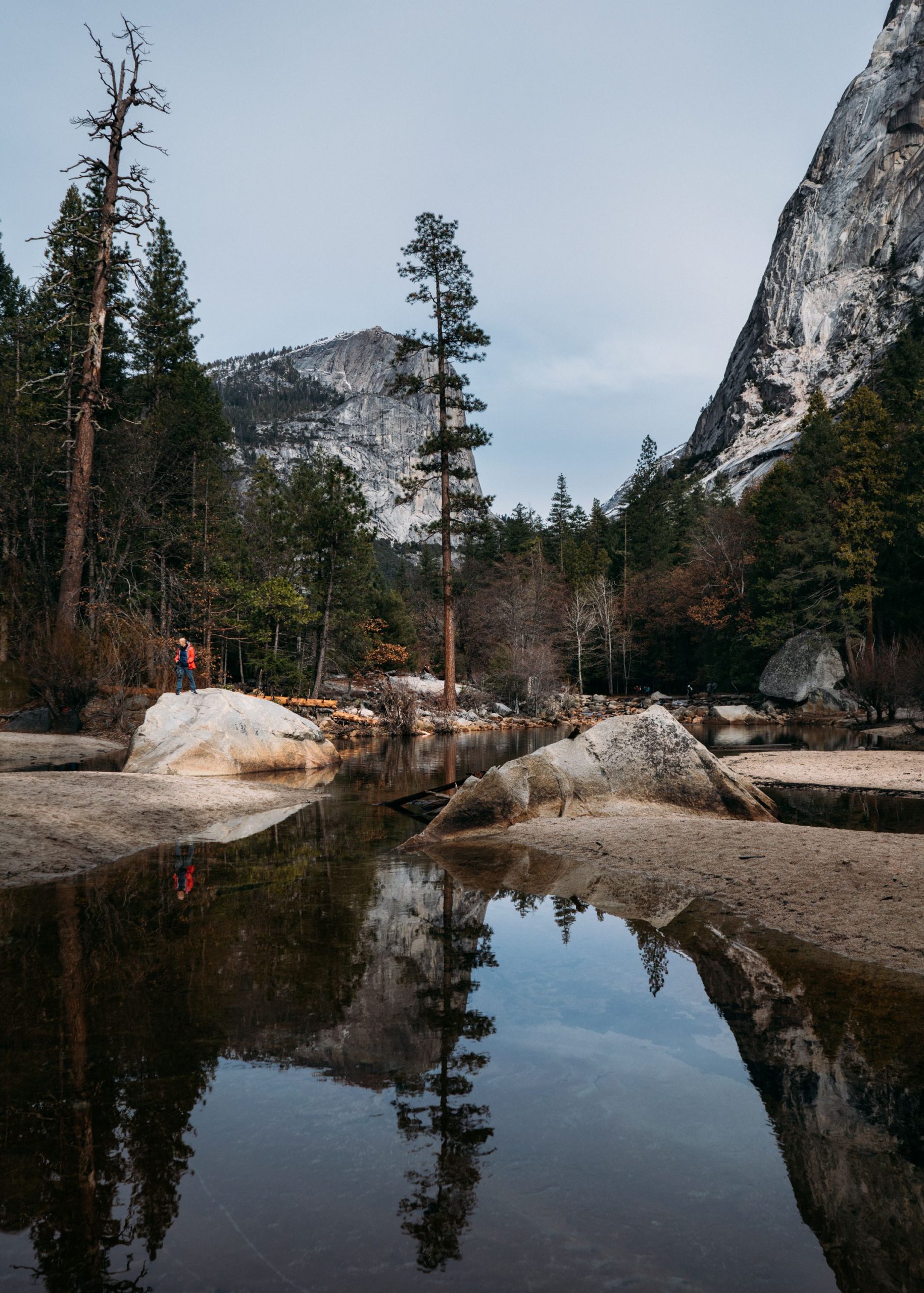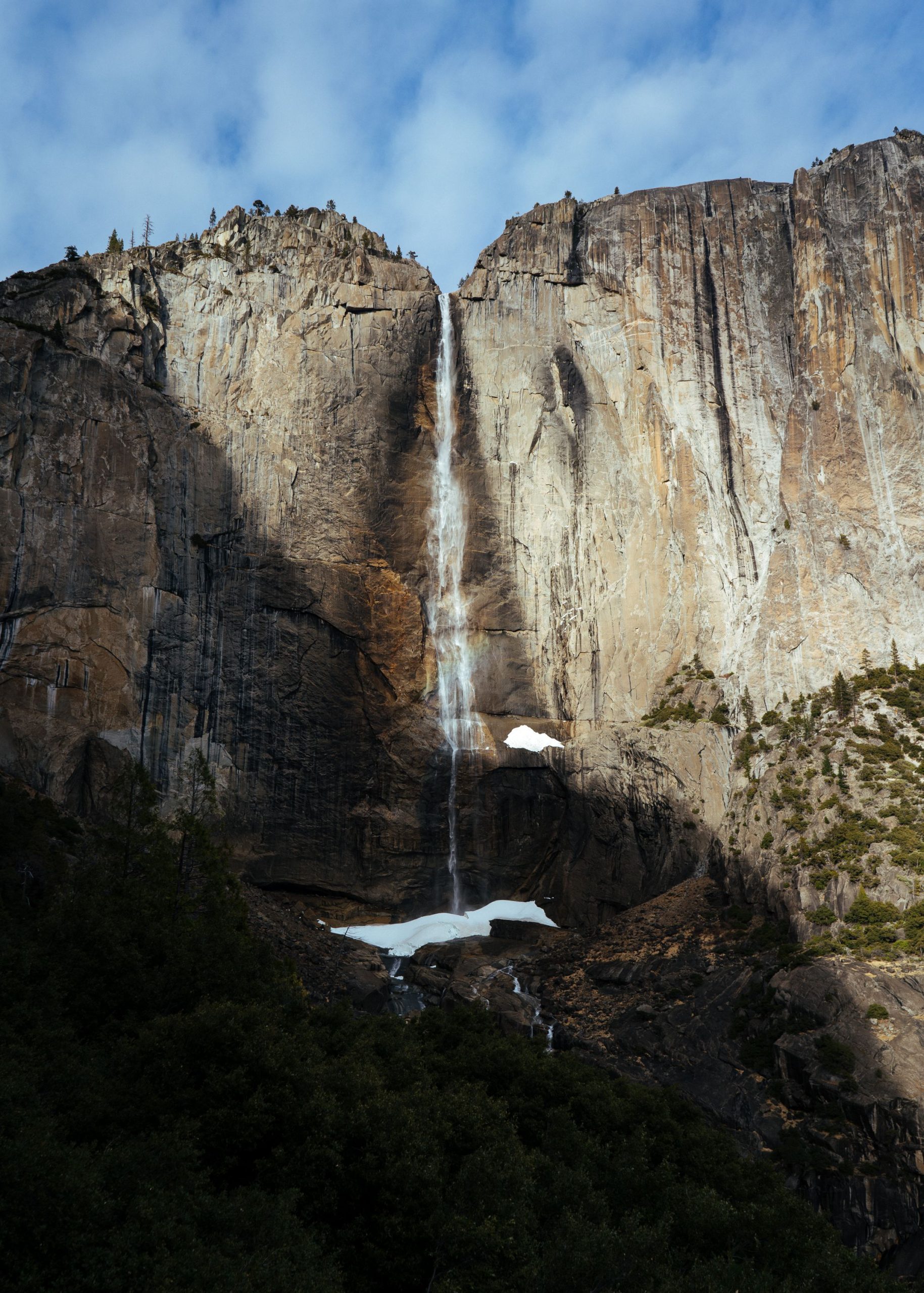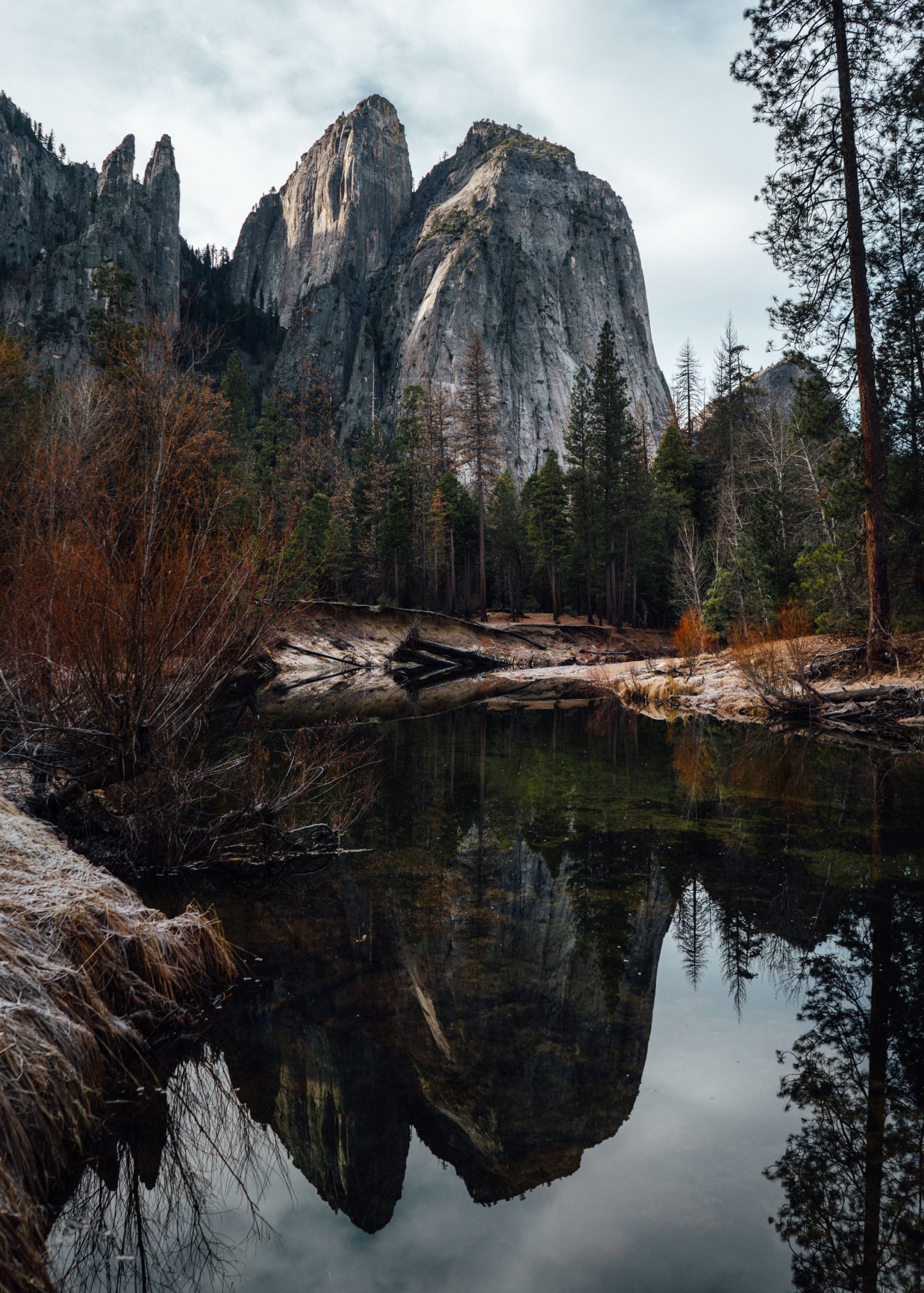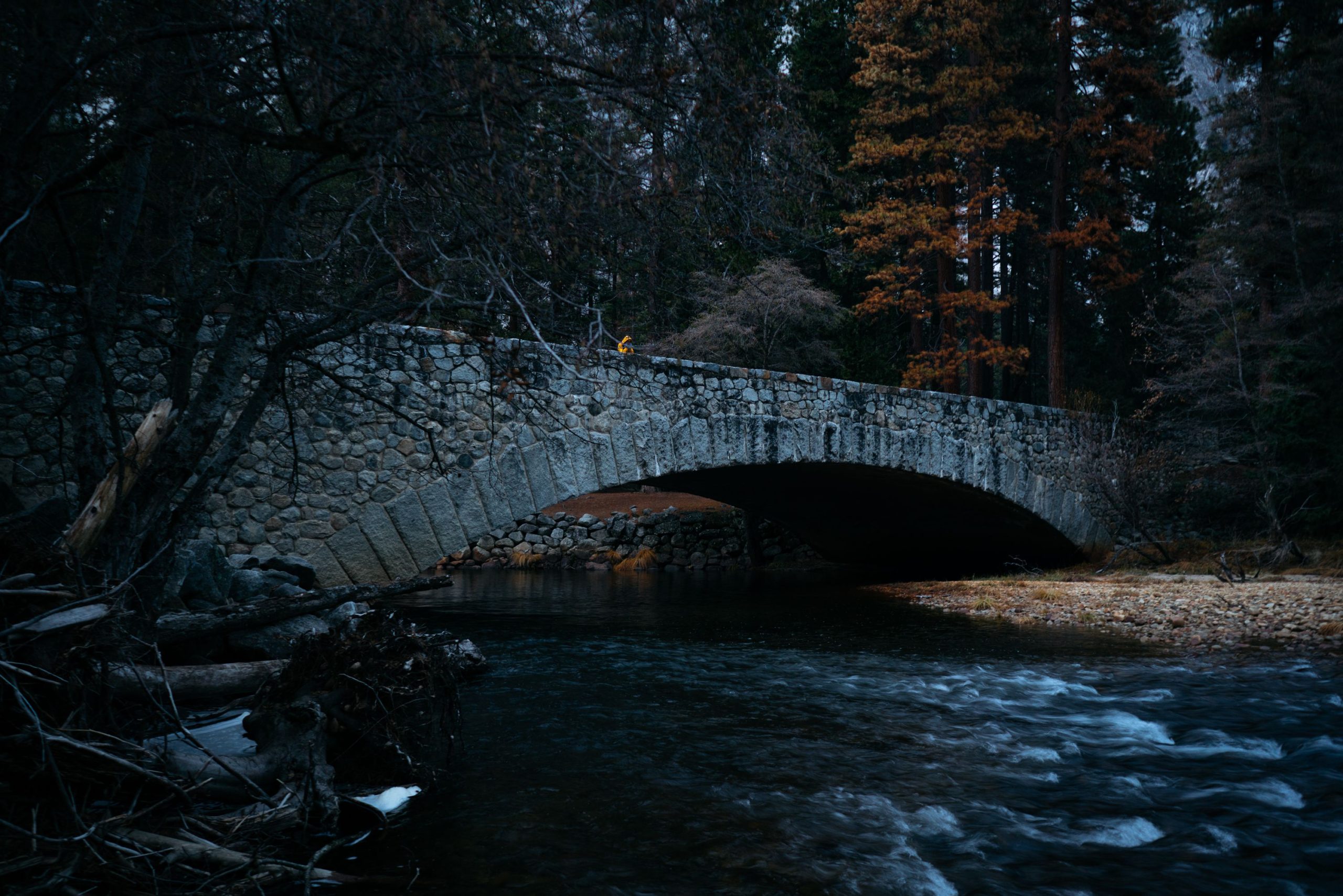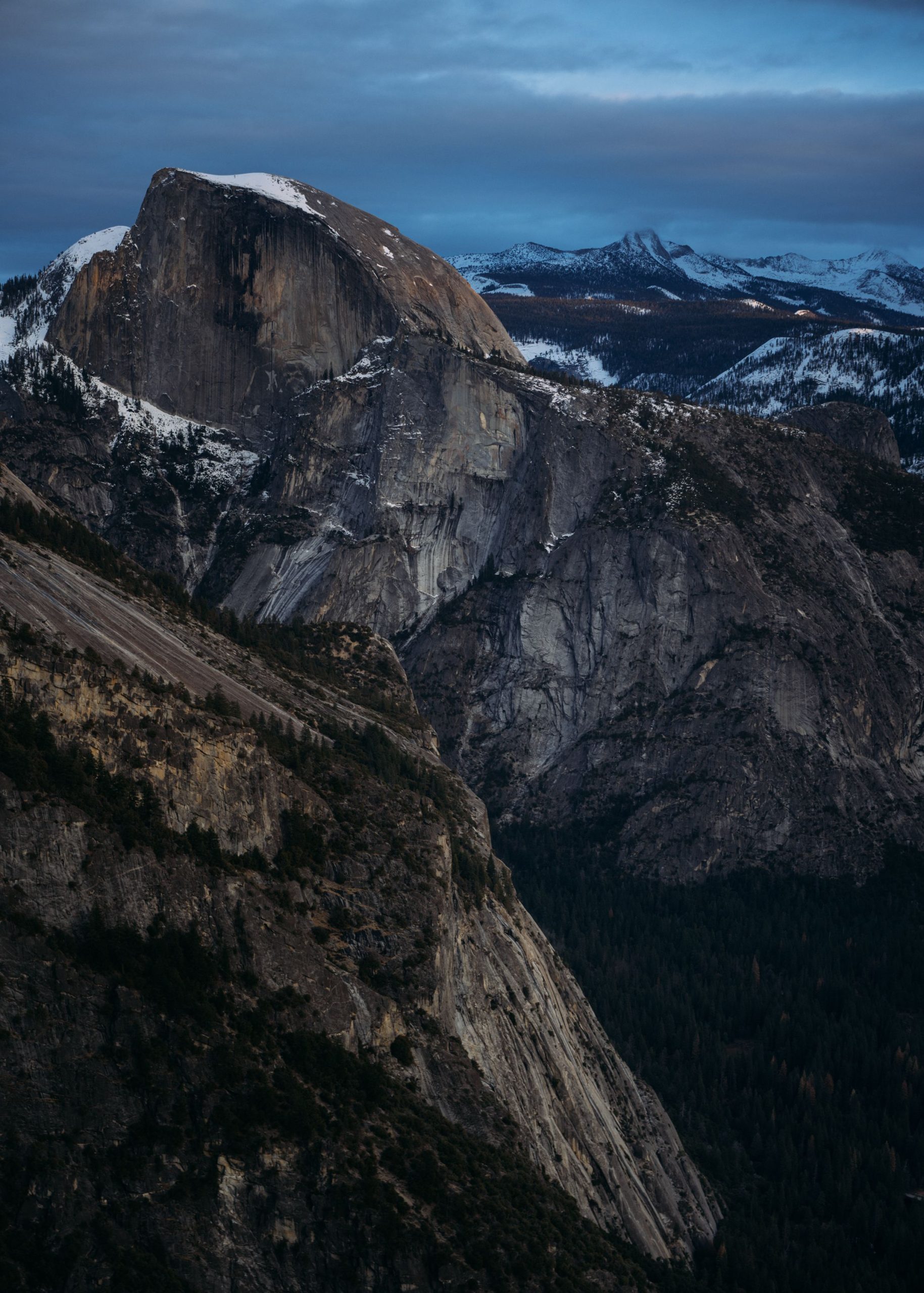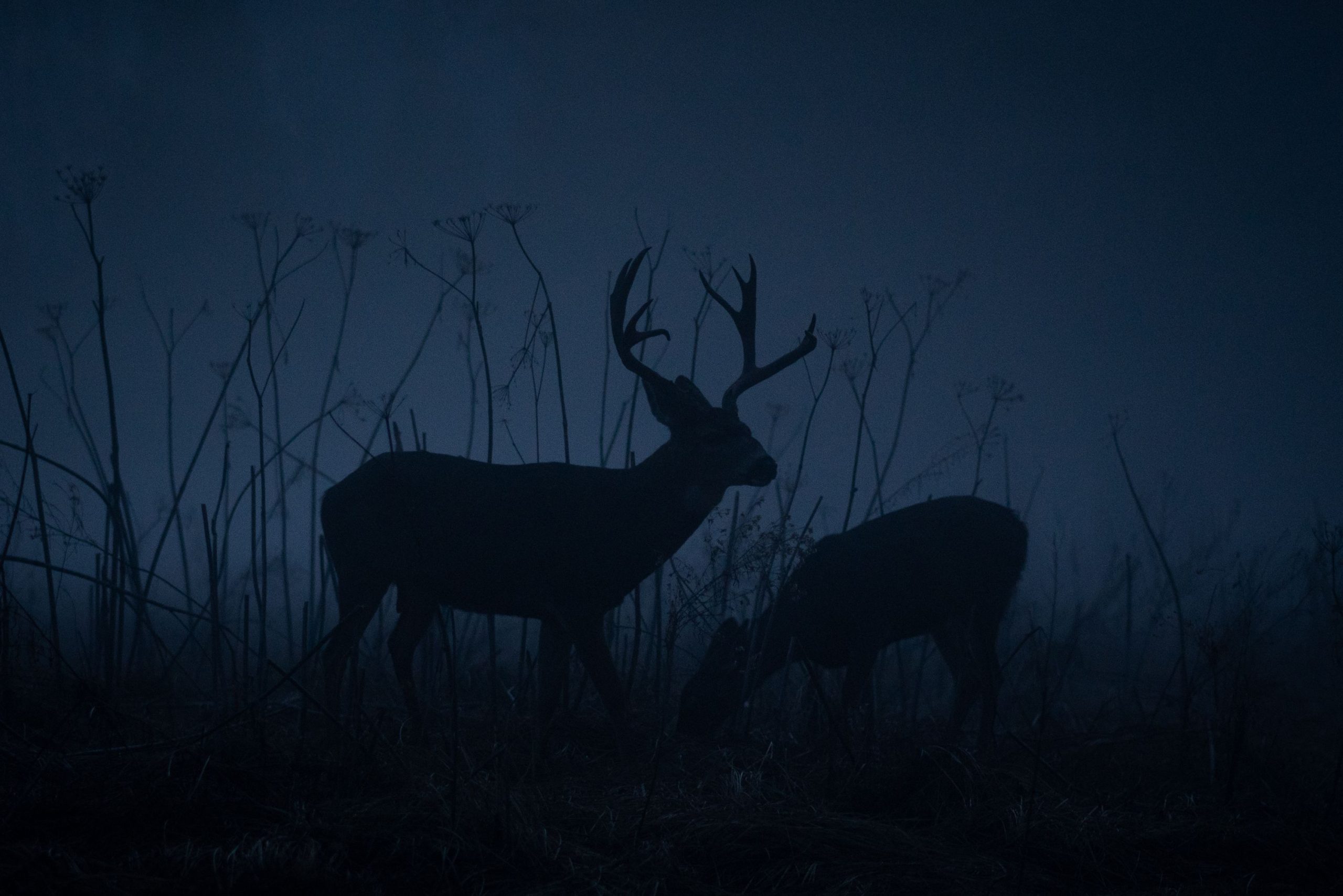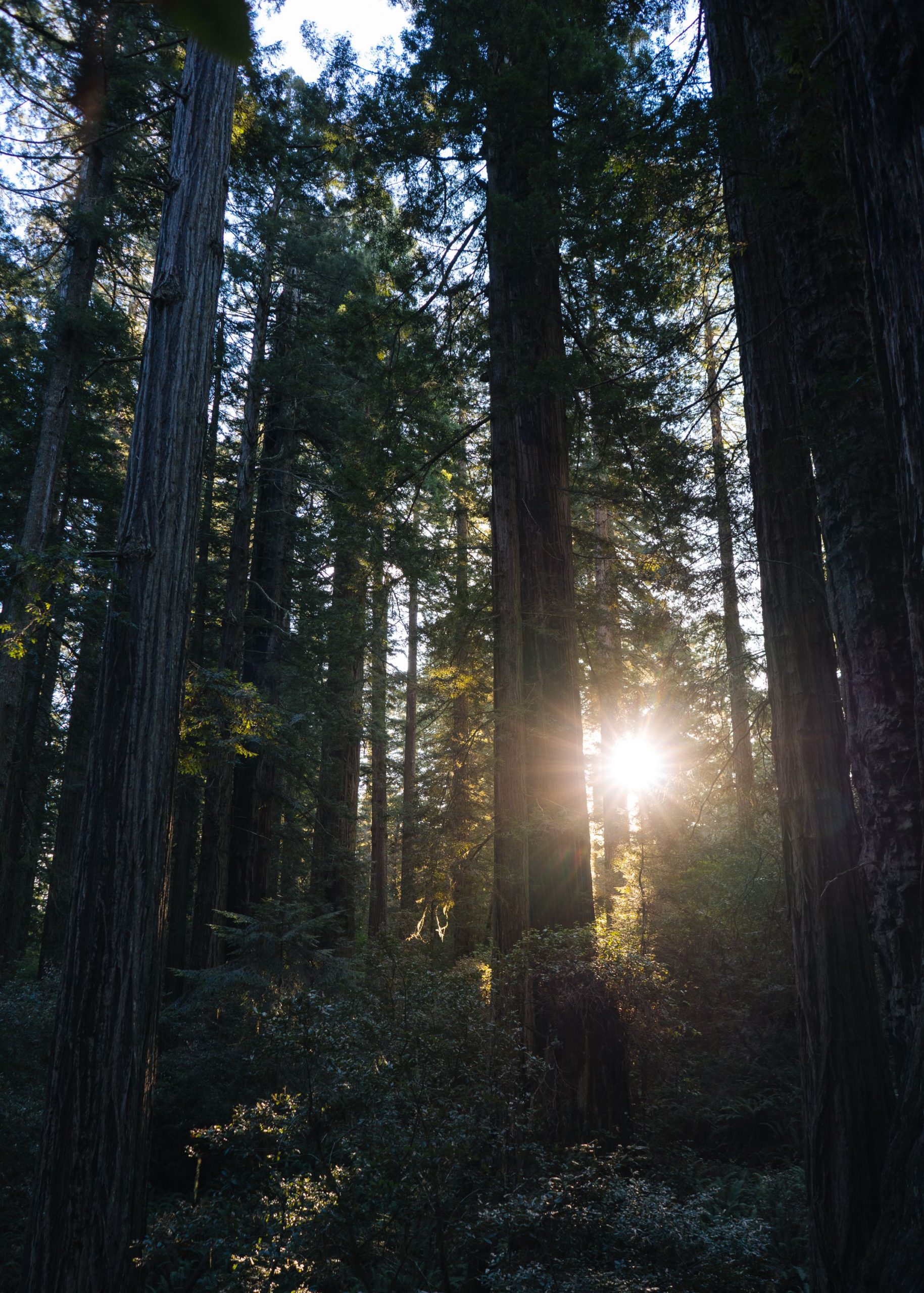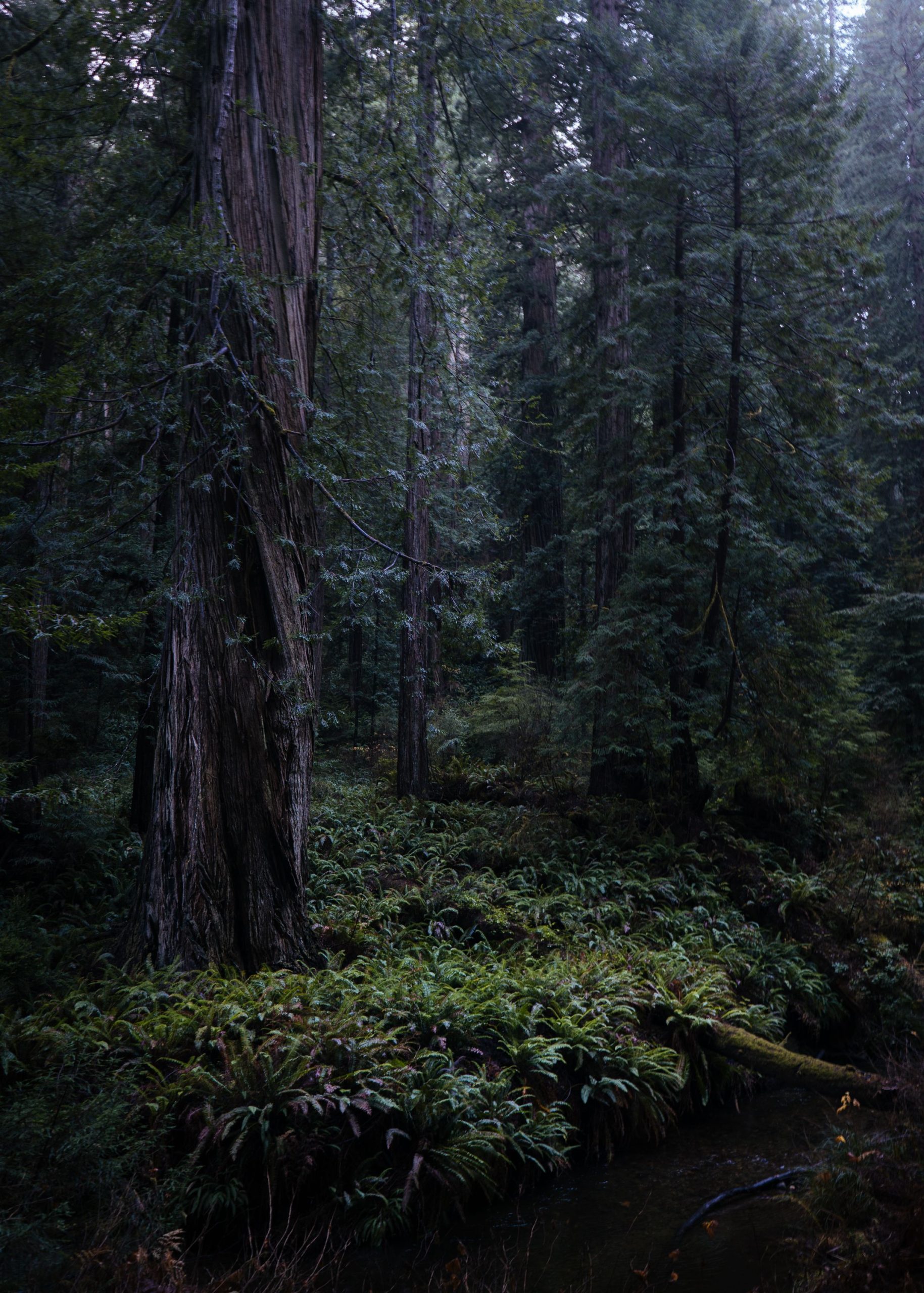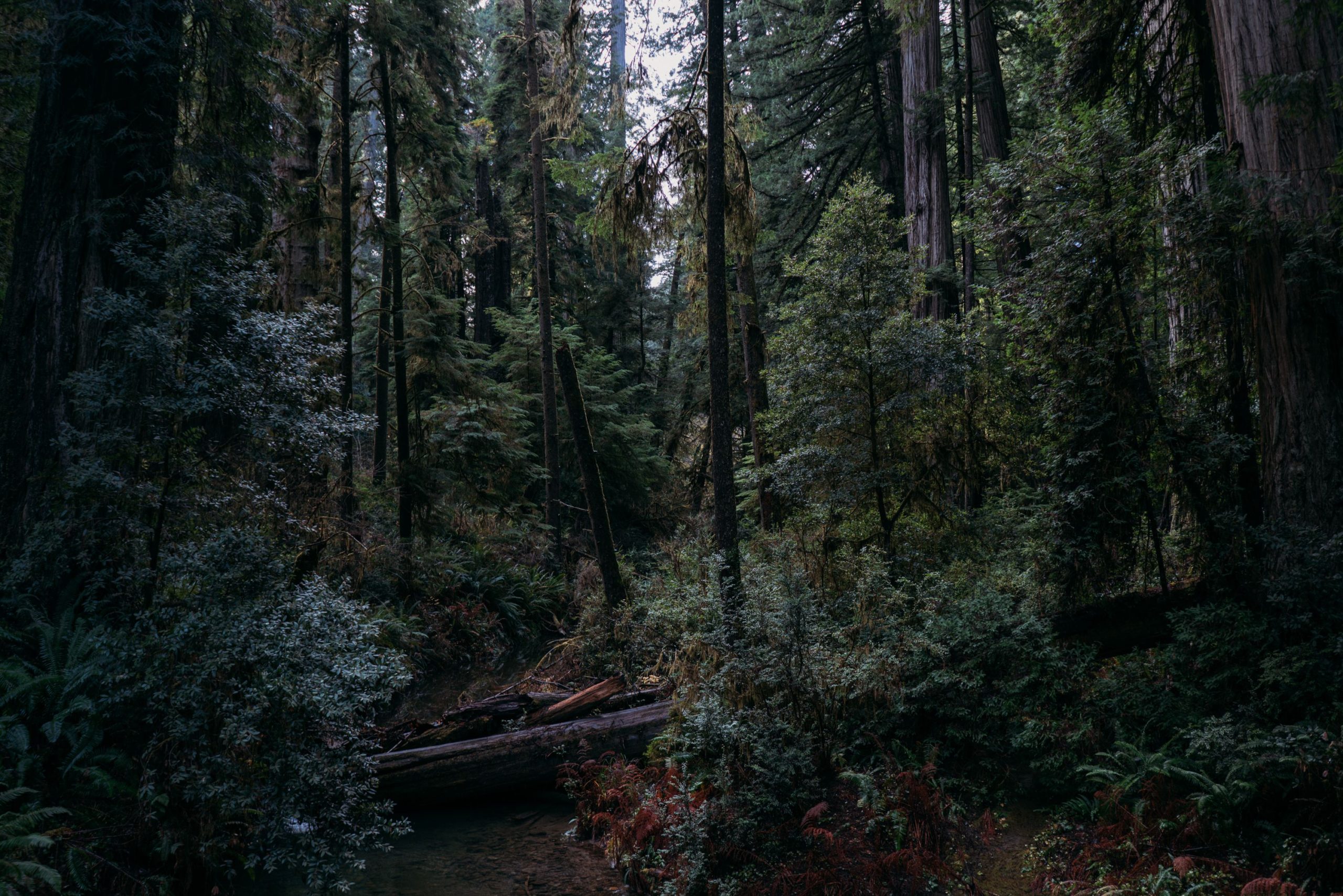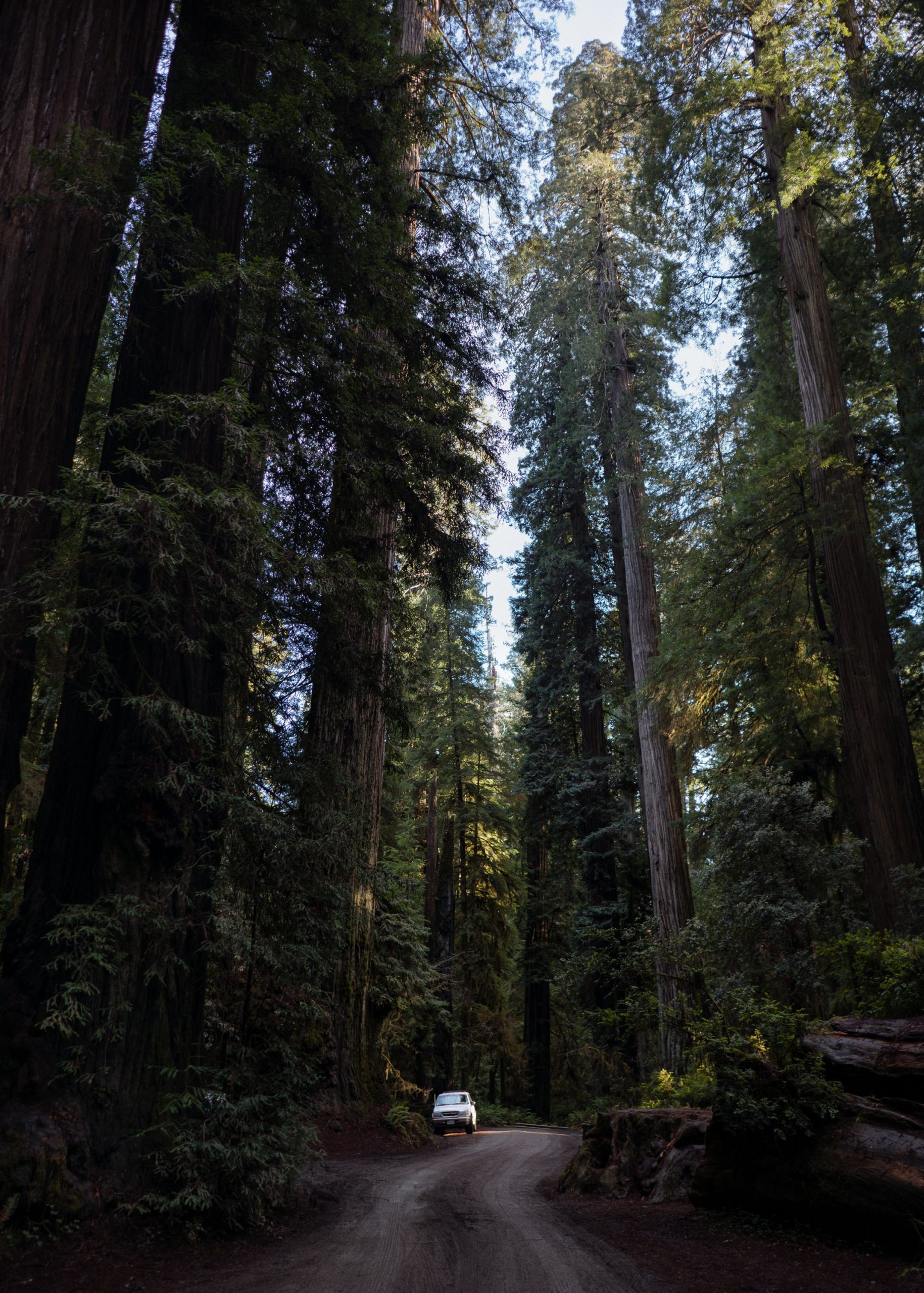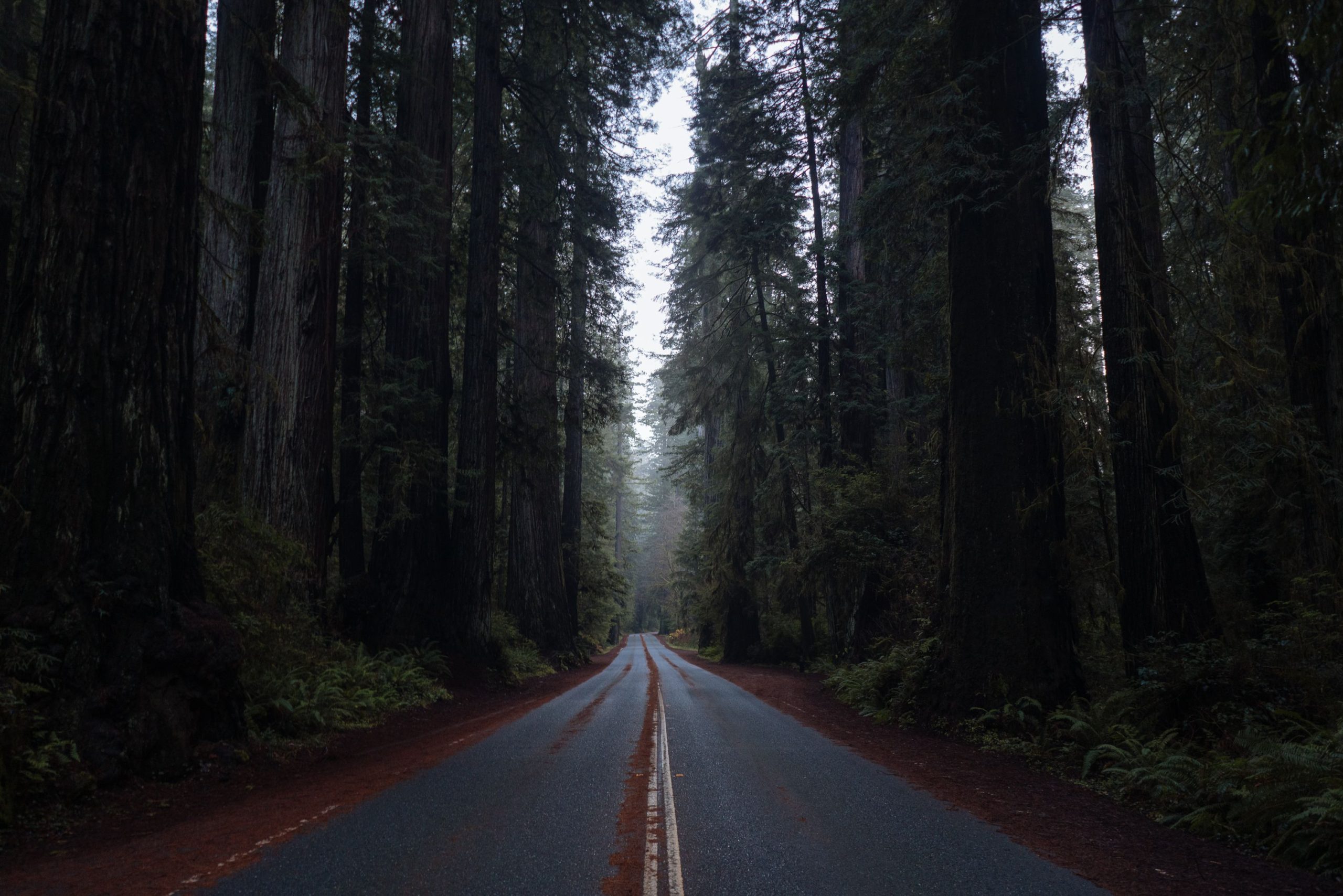The Sequoia and Kings Canyon National Parks is the consolidated management structure for Sequoia National Park and Kings Canyon National Park in California. The two parks have been jointly administered since 1943. They have a combined size of 1,353 square miles (3,500 km2). It was designated the UNESCO Sequoia-Kings Canyon Biosphere Reserve in 1976.
I left the coast in northern California to drive inland and visit the last national parks of the trip. There weren’t that many left, there was the not so popular pinnacles somewhere in central California, then Sequoia and Yosemite in the north (the popular ones) and even though technically not a national park, I made out my route so Lake Tahoe was on the way too. To finish it off there were still the Redwood forests back at the coast.
I hadn’t seen any of the big American trees in person so I was excited to finally see them. But first things first, the last shower I had taken was in the hostel in San Clemente. The only bigger city on my drive was Fresno and to my surprise I hadn’t been to a bigger shithole during my whole trip through the United States. It seemed like the end of gentrification. (which at the same time is the beginning) I went to all the community centers Google maps had to offer but the city was so poor that they couldn’t offer any services. Showers were either broken or not there and the fitness center asked for a full day pass which ended up at 23$. I left quite disappointed as cleaning myself was necessary and I had already wasted a good three hours of time and gas looking for one. I do remember that I couldn’t find one because Fresno as it was was just out of this word ghetto, but can’t remember where I found one in the end. Recreating the route, it must’ve been another couple of days later in the Yosemite national park campgrounds.
I drove into Sequoia for the day, the climb up the mountain range was long and extremely steep The thought of having to drive back down again in the evening was a bit worrying, but the gigantic trees took my focus from thinking about it. I made my way around the various viewpoints and attractions only to discover bigger and bigger trees. The ones in the redwoods were supposed to be taller but the record for the tree with the most mass went to the General Sherman tree in the Sequoia national park. Everything was at high altitudes of around 2000m, there wasn’t much infrastructure, even finding a place selling coffee or snacks wasn’t easy.
I visited a viewpoint for sunset that had the mountain peaks of the Sierra Nevada on the one side and the rolling hills all the way to Fresno and maybe to the the next mountain range on the other. The view towards the mountains wasn’t that spectacular as the sun set on the other side and there wasn’t too much mood that day, just a rising full moon backlit by the sun. A photographer-girl got really excited though, there was fog on the bottom of the valley between the hills and strange colorful sunset clouds in the sky, a great photo opotunity? Technically yes, but sadly the fog was the smog coming from the San Francisco bay area and the clouds were geo engineered chemtrails to keep the sun out. The valley between the coastal mountains and the Sierra Nevada was supposed to be Californias greenhouse and needed protection. So much for natural beauty… It makes me very sad how the last, more or less brainwashed generation doesn’t know any better. Still, this was just a viewpoint, the park and the trees were amazing.
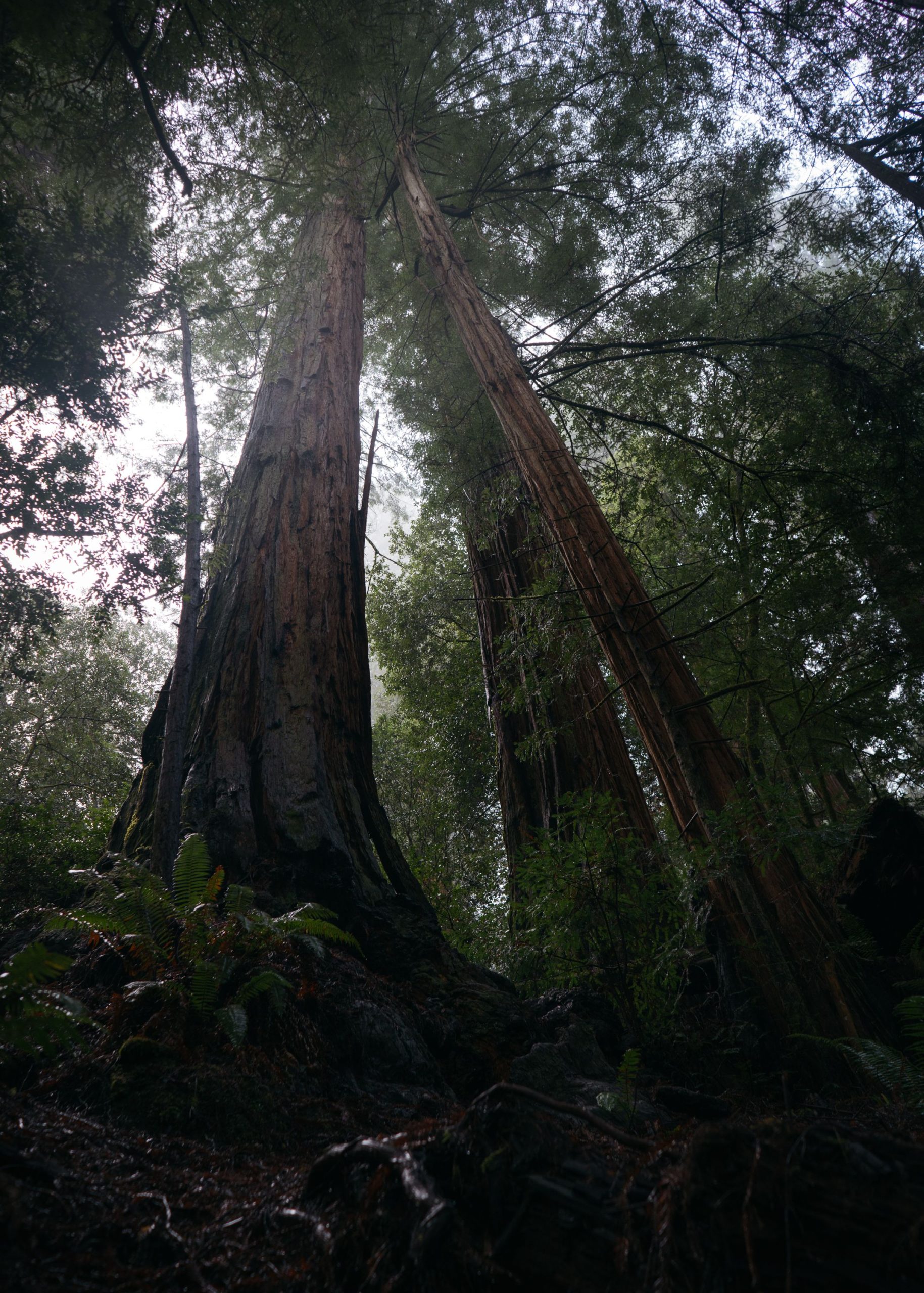
Big trees, Sequoia National Park, USA
I looked up many big trees and found them really fascinating. It his hard to put into perspective how tall they actually were, without some sort of reference. Eddie is in one of the other pictures and here it really shows.
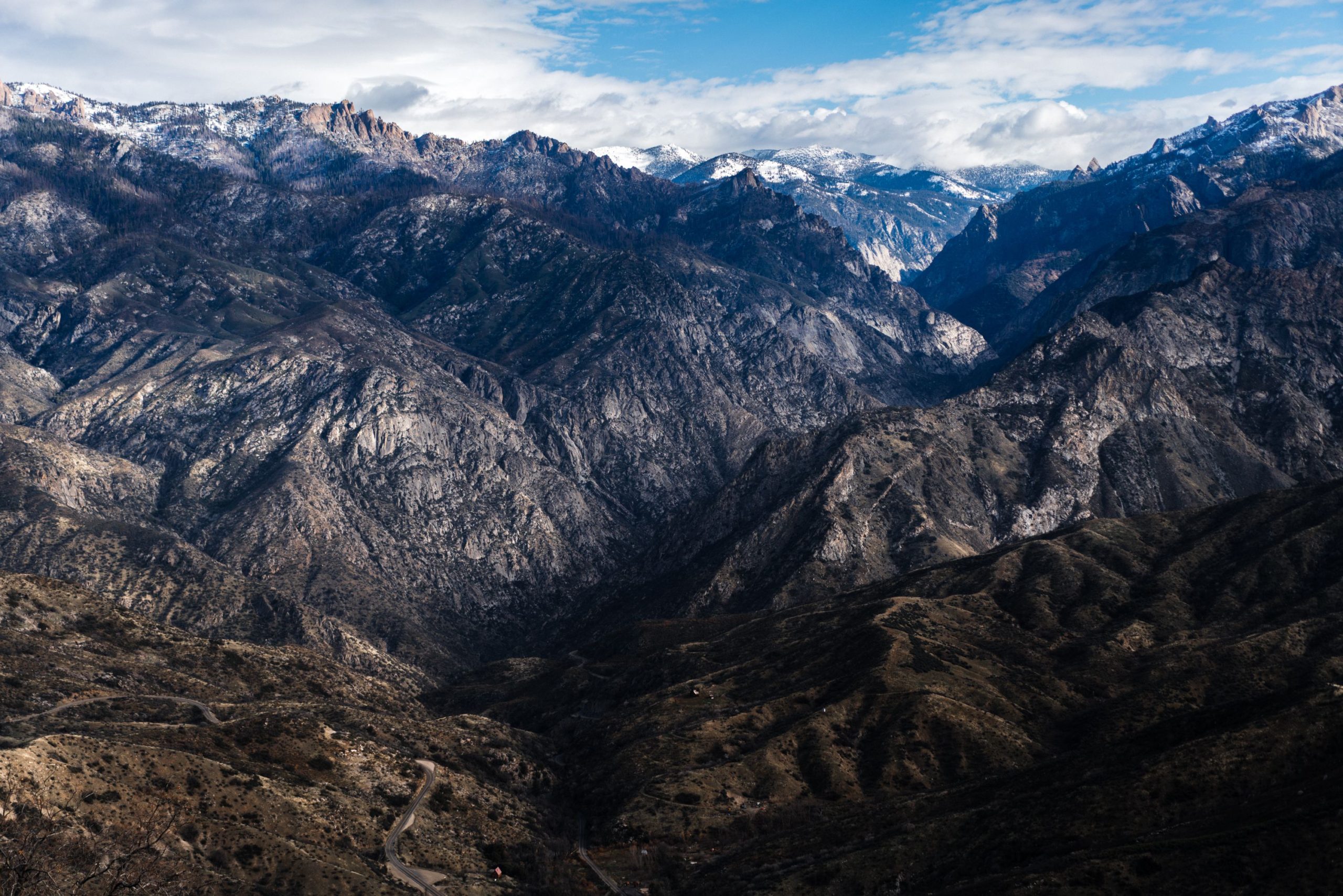
Yosemite National Park (/joʊˈsɛm.ɪ.ti/ yoh-SEM-ih-tee) is an American national park in California, surrounded on the south-east by Sierra National Forest and on the north-west by Stanislaus National Forest.
The park is managed by the National Park Service and covers an area of 759,620 acres (1,187 sq mi; 3,074 km2) and sits in four counties – centred in Tuolumne and Mariposa, extending north and east to Mono and south to Madera County. Designated a World Heritage Site in 1984, Yosemite is internationally recognized for its granite cliffs, waterfalls, clear streams, giant sequoia groves, lakes, mountains, meadows, glaciers, and biological diversity. Almost 95% of the park is designated wilderness.
Sequoia and Yosemite were connected by a mountain pass that led through snowy landscapes. Winter was on it’s way and the National parks or at least some of their roads were about to close so it was time to hurry up. The closure of the road would’ve literally meant a detour of hundreds of kilometres. Just as I climbed up the pass a winter storm broke out and it started to rain like crazy.
Heavy rain at 2000ft, even heavier rain at 4000ft, turned to mush-snow at 6000ft and absolute madness at 8000ft. I was aware of it because of the radio (I did have some CDs, but whenever there was radio reception I would listen to it because it weren’t that many CDs) So I wasn’t as surprised when it started to snow more and more. Eddie had massive tires which had proven their winter capabilities under severe conditions a few times before. As usual I was driving very slow and funny enough a little 2wd car with a couple of grandparents steering it overtook me. I didn’t think much of it except that maybe I should be driving a little faster. About half an hour later signs started to show up that a 4wd with all weather tires was the required minimum to keep going. After a while I saw the little car on the side of the road, struggling to keep going in either direction, tires spinning, sliding around like on a frozen lake. It really showed how bad the road conditions without the right tires were.
Luckily I made it through the snow and found an acceptable sleeping spot just outside the National park. A little parking lot surrounded by trees, quite high up in the mountains, guarded by a snowman and high walls of snow that had been pushed to the sides to keep the lot usable. It was a cold night and I didn’t sleep for too long, I came and left in the dark, my guardian did a great job and no park ranger or police officer harassed me that night. As to be expected with one of the most famous parks in the United States it turned out to be quite epic, even though the popular part was relatively small, quite busy and rather commercialised. The weather was wintery, not really cold but still quite wet and snowy once I climbed out of the valley to the higher elevations. I did a few of the things, a hike here and there, the waterfalls, walk around the lakes, look for mirrors and hike up the mountains to the Captain.
There was a place called Yosemite village, this was where the camp ground, showers, some restaurants and shops were. They had a lounge as well, it might’ve only been for paying guests but there were no questions asked at the door and so I hung out and chilled a bit by the fireplace after dark. I did a little bit of work too. This made the experience so much better, it kind of made for the proper mountain experience, staying at a wooden cabin (for a bit), the fireplace, comfort, the cold outside. The only downside was having to leave for the night, exit the park and stay on a little stretch of green on the side of the road leaving Yosemite. I am not sure but I think I stayed for three nights, there was quite a bit to do in the park and to be able to have a hot shower and hang in the lounge after dark made it so much better.
I was at the top of Yosemite falls and looked for the sunset. I had left the part of the path that was snow free and walked over rocks through snow and bushes towards where I thought a viewpoint might be. I was already on my way back when some kid, maybe 20 years old, asked me if I had seen his friend, he had gotten lost and now he couldn’t find him any more. I told him the direction I came from and that I didn’t see anyone up there. It was blue hour after sunset and about to quickly get dark, the boy asked if he could walk down with me and I agreed. I still had lots of stuff to do, shower, eat (buy crisps at the gas station) and work in the lounge. I was in a hurry and the boy couldn’t keep up so I lost him after a while. I didn’t think much of this experience until I heard of the “missing 411” about 2 years later. Basically a collection of people (411) that had gone missing in the American National parks under mysterious circumstances, sometimes they showed up again but most of the time dead with quite a few cases in the Yosemite park as well. I did a bit of google research, I tried to remember the exact date I did the hike up to the falls, but nothing relevant came up in the results, so I assume the kid must’ve found his way back.
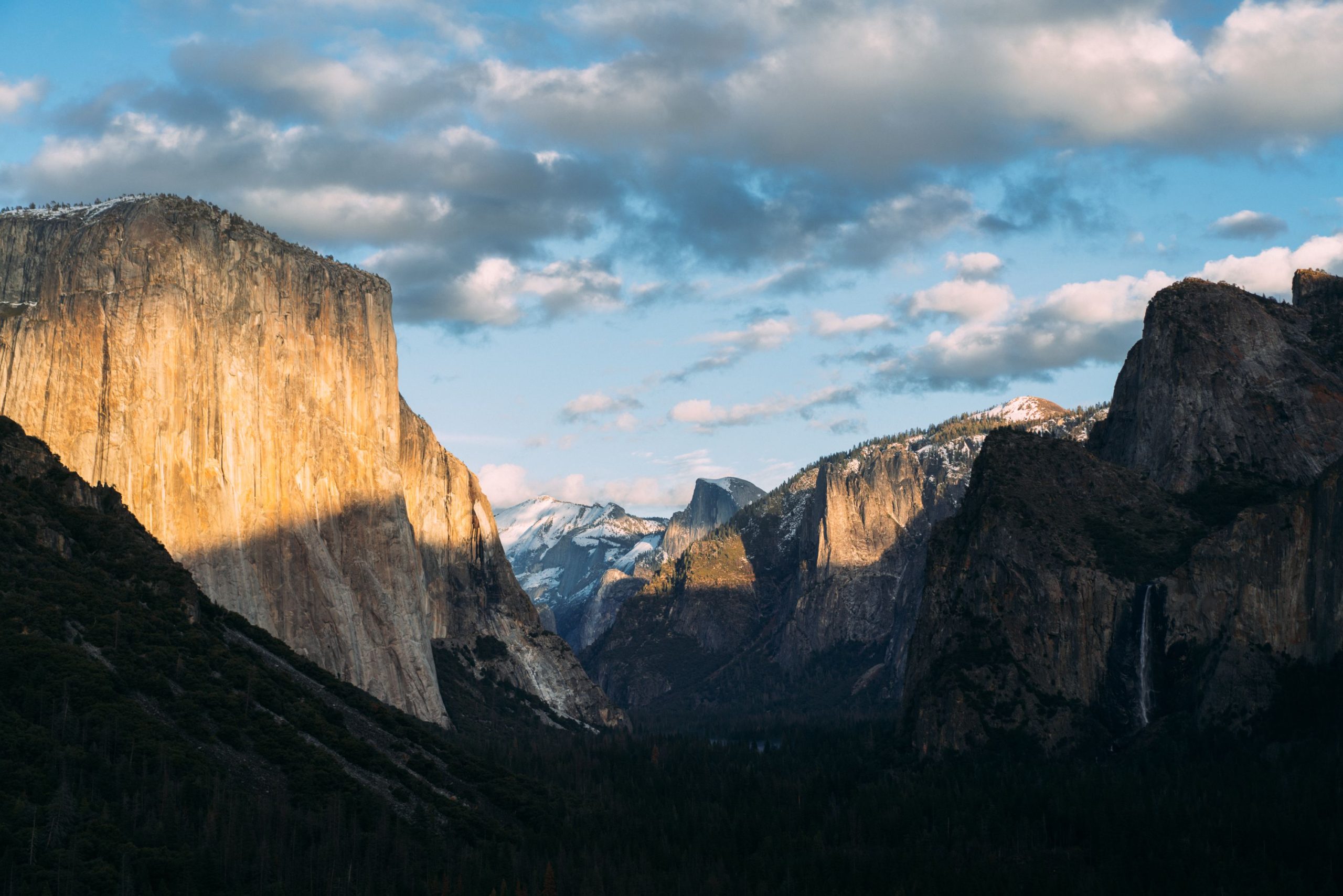
Yosemite Valley, Yosemite National Park, USA
The famous shot, a variation of this photo was a background for one of Apples operating systems, called… Yosemite. After crossing the snowy pass from Sequoia to Yosemite this was pretty much the first thing I saw after exiting a long tunnel. I was going to come back and shoot it again but never did because the road was very steep.
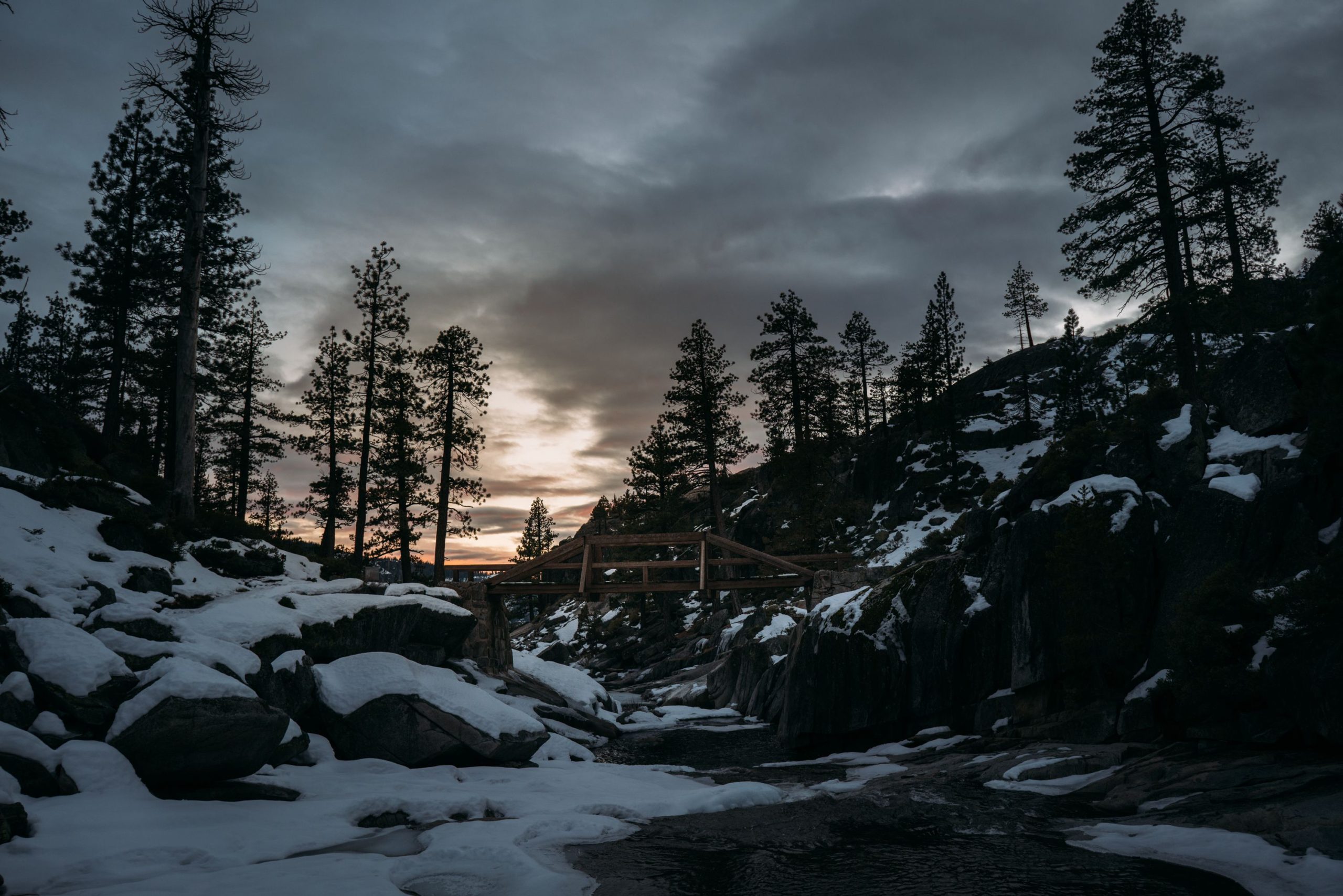
I dropped by Lake Tahoe on the way back to the coast, a good way to avoid the busy and hilly San Francisco area. It looked beautiful on the internet (the photos I saw were mainly shot in the summertime and the difference was incredible, it looked tropical in the summer and felt like the centre of Antarctica in the winter.
I had heard about it a couple of times before, manly in skiing and snowboarding games. It was proper winter in the above 2000m range so ski season was in full effect and it was terribly cold, -14C for sunrise in the city. Too cold to go out, for Eddie as well as for myself. I tried to get out one morning but besides the freezing cold the snow and ice on the roads made it dangerous, especially in the early hours. The temperatures required a hostel and the only one here sucked a bit as there were quite a few hobos staying that I had to share rooms with. Living in the hostel must’ve been the cheapest option to be able to stay in this town, just as it was in San Clemente. There’s no problem with hobos in general, I actually like them if they are not too high, mostly the only people that talk to me out on the road and hanging in city parks. But the smell, extremely stinky, so bad that for the second night I preferred to sleep in the car at -10C° in the parking lot under the house.
One morning trying to get out for sunrise I nearly lost it all at a red traffic light. I hadn’t warmed Eddie up enough, so when I took the foot off the gas the engine started to stutter and so the little brake power I had left me. I pretty much over-shot a busy crossing with recently turned red traffic lights. Somehow the other people in traffic seemed to realize I wasn’t going to stop, waited and let me pass. It was about 5-6am and everything was just icy. That woke me up but killed the vibe of driving around looking for spots.The lake was quite big, the roads icy with loads of ski related traffic, the hostel full of stinky hobos and a bit of work needed to be done. There was a computer/work room which was great until the hobos needed to use the computers and stunk up the place. Not the best time, the smell of sweat, piss, alcohol and cigs was extremely unpleasant and it wasn’t as if there weren’t free showers. On the positive side, it was still interesting to see an American ski resort town in full effect. Shiny like on TV (except in the hostel and the dirty side roads) The city was build on the state boarder to Nevada, so the northern part was full of clubs and casinos, après-ski was well taken care of. I felt great relief when the last drop from 2000m to sea level was finally completed. The brakes were always a gamble and with every last-last climb I did start to ask myself if one more might be pushing my luck a bit too far. I always worried about it but always pushed through and so I was very happy when finally there were no more mountain ranges to cross. But as always, the last drop turned out to be a big one, dropping from above 2000m to sea level in a couple of hours, a lot of frightening 6% drop signs for the next 6/8/10 miles signs on the way. I had gotten used to it by now and tried to enjoy the last thrill as much as I could. After an exhausting full day of driving I found a dirt road that led to nowhere important and set up camp for the night. It was alright and considering there was nothing to be found in the trusted app nearby I contributed it to the places in the I overlander app.
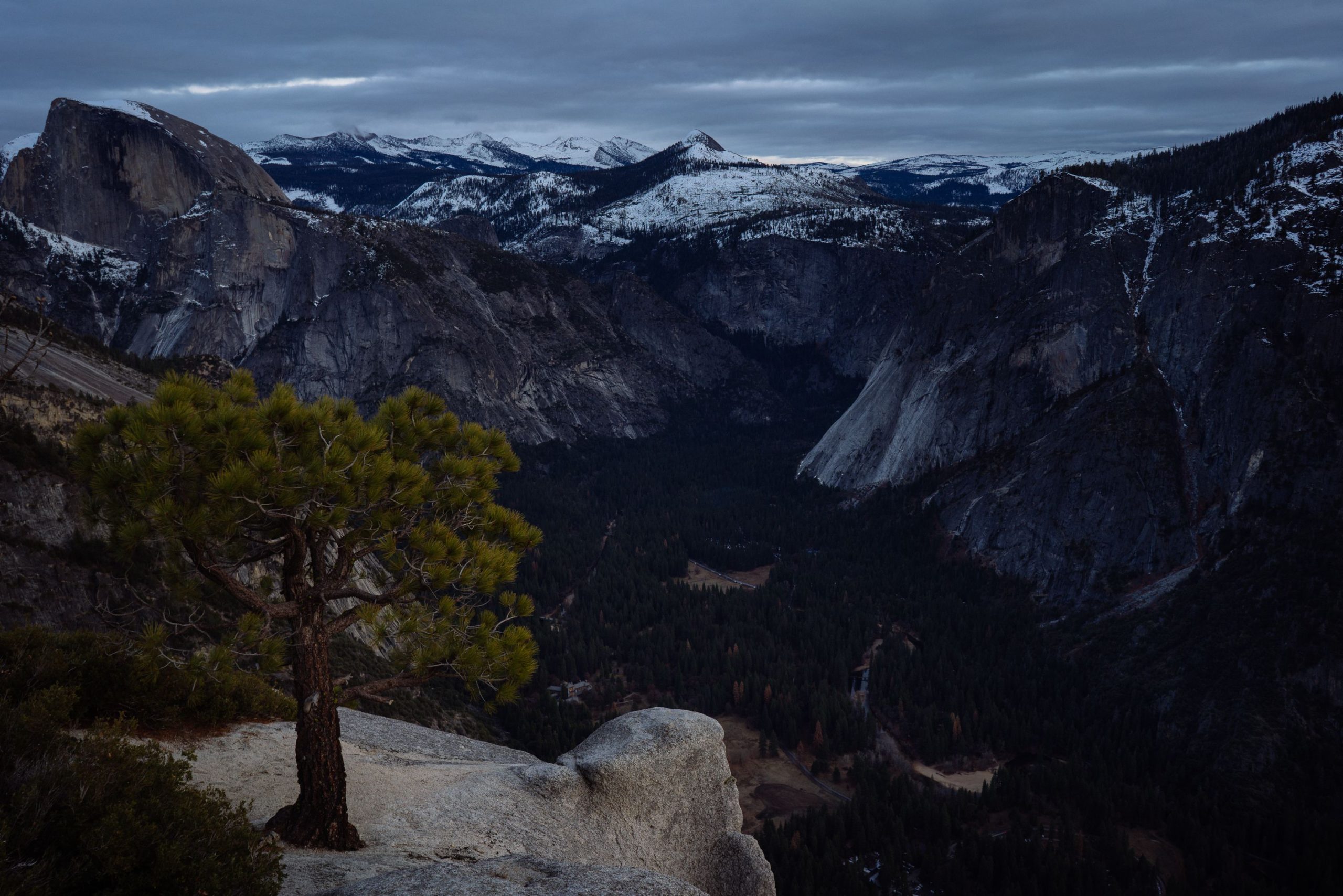
The Capitan, Yosemite National Park, USA
This is the place I hiked to before the kid asked me about his lost friend. It was a bit scary, as it would get dark quite fast after sunset. I had left the path, waded through snow and climbed over rocks to get there. Always hard to judge how long it may take to get there and how far it might be. IIt was wintertime so maintenance was not happening in this part of the park.
The Redwood National and State Parks (RNSP) are a complex of several state and national parks located in the United States, along the coast of northern California. Comprising Redwood National Park (established 1968) and California’s Del Norte Coast, Jedediah Smith, and Prairie Creek Redwoods State Parks (dating from the 1920s), the combined RNSP contain 139,000 acres (560 km2), and feature old-growth temperate rainforests.
Located within Del Norte and Humboldt Counties, the four parks, together, protect 45 percent of all remaining coast redwood (Sequoia sempervirens) old-growth forests, totalling at least 38,982 acres (157.75 km2). These trees are the tallest, among the oldest, and one of the most massive tree species on Earth. In addition to the redwood forests, the parks preserve other indigenous flora, fauna, grassland prairie, cultural resources, portions of rivers and other streams, and 37 miles (60 km) of pristine coastline.
The next place to visit were the Redwoods on the California coast. In the end I preferred them over Sequoia because they were at sea level and spread all the way to the beach. Technically it is all the same wilderness, just separated by their names and about 2000m in altitude which did make for a big difference in flora and fauna.
The park was amazing with all the giant trees and a perfect, not too cold, wet and rainforesty climate. I stayed in the town of Eureka for a bit, mainly for a couple of visits to the local library. I hadn’t had a good coffee in a while, so a few visits to some of the hip local coffee shops were necessary. The town itself was quite nice, a somewhat classic resorty beach town that had some very pretty and popular wooden Victorian style buildings, and the most iconic one I found randomly on my way to the library. The library itself wasn’t a classic Victorian style building, but rather a “modern” concrete box. On the positive side, it offered an amazing ocean view from the workspace.
The weather was still warm but the northern climate started to come through and it was getting a bit fresher. Even though I was back on the coast again the landscapes, plants and trees had changed quite a bit since I had left San Clemente. For some this might be the perfect climate, not too cold, not too warm with lots of ocean mist and humidity.
A great thing about getting closer to Canada was that my number plates weren’t that odd any more and once and I got into Oregon other Canadian vehicles could be spotted regularly. I hung around the coast for a bit, did the walks, paths, hikes, trails, followed the lighthouse trail, spend my days around different beach towns and looked up many giant trees on my way up north. Sleeping wasn’t as much of a problem as I had left southern California, I found a nice spot on a cliff overlooking the ocean with an inlet and a little island. Next to a road, so there was some traffic but it was more of a residential street so it died down at night.
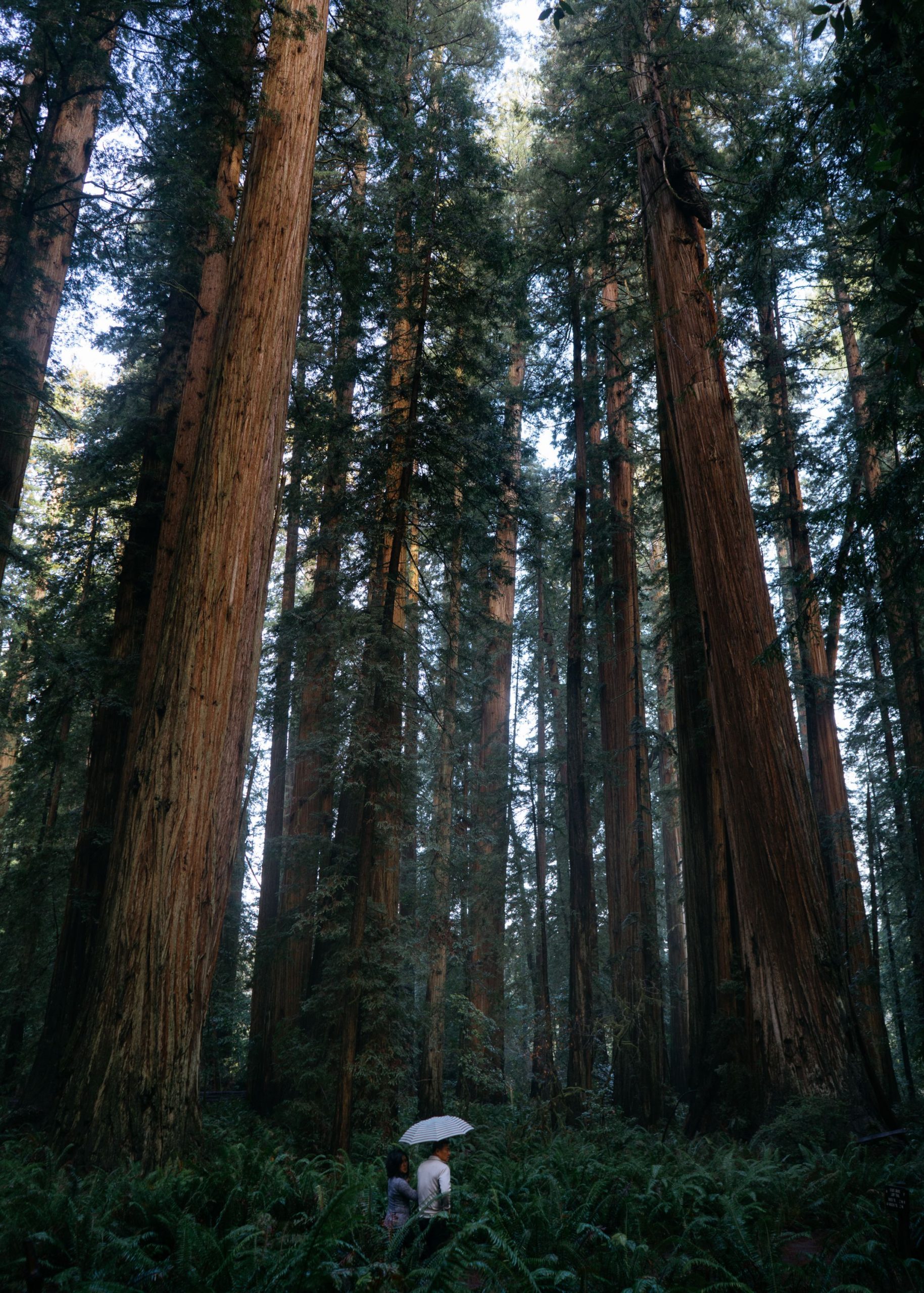
Rainforest, Redwood National Park, USA
This is one of my favourite photos out of the Redwoods. It was a foggy morning and had rained a bit when these two people showed up with an umbrella in one of the most epic sections of the park.
